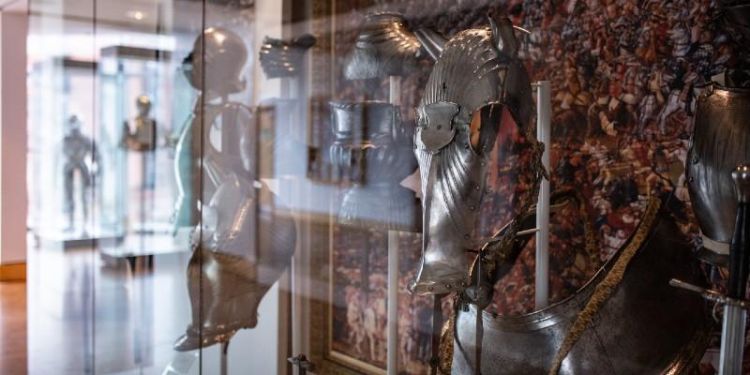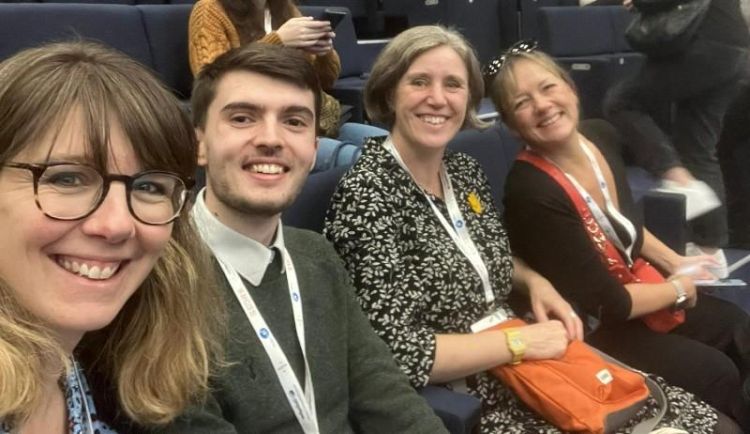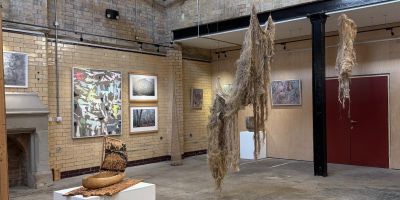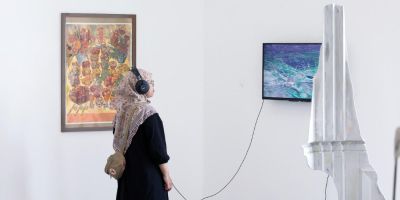Weaving the threads together

Postgraduate Researcher Stuart Bowes reflects on the growing intersection of his key research themes, as his collaborative PhD with the Royal Armouries draws to a close.
The last few months have seen a series of endings for me. At the end of April, I finished my year-long placement within the registrar department at the Royal Armouries.
In May, I had an article published that I had been working on for a year and a half. In June, I attended the final cohort event organised by my funding body. Perhaps most ominously, I have just submitted the first draft of the conclusion to my thesis.
Together, these events seem to neatly encompass many of the themes central to my collaborative doctoral project from its outset – museum practice, impact, networks, and, of course, writing.
As I approach the final stages of my PhD, it seems an appropriate time to reflect on these key issues and how they have intersected in the course of my efforts.
First of all, there is my ongoing engagement with museum practice. A lot has happened since I last discussed my work as a registrar trainee at the Royal Armouries nearly a year ago.
Adding to the list of duties I outlined there, I have remounted objects on display, reviewed institutional credit lines, sent countless more emails, and spent greater time than I’d care to admit unravelling the convoluted acquisition of a group of film props.

Auditing the Armour of a Horse and Rider, Royal Armouries, Leeds. Photo by Stuart Bowes.
The broad remit of the role means that you never quite know what you’re going to get when you arrive at the start of the day.
Registering newly accessioned objects in the official logbooks was an especially satisfying experience. You are responsible for a profound transformation, in a way. As one chapter closes on an item’s previous ‘life’, another one opens for it as a museum object. Plus, you get to write with a proper archival pen on high-quality paper!
Alongside exposing me to further aspects of routine registrar practice, my time at the Royal Armouries has given me a much greater appreciation of the internal workings of a national museum. As I became more familiar with institutional process, I was able to act with greater confidence and independence in my dealings with the collections.
But probably the biggest insight I have gained through my time with the Royal Armouries’ registrar department is that their expertise lies as much in cultivating people as in managing objects. Collaboration was central to my role: working with departmental staff, with institutional colleagues, with other museum personnel, with cultural bodies and so on.
I have learned so much from this regular and varied dialogue.
The same has been true of the PhD as a whole. My investigations into the intricacies of registrar practice have brought me into contact with a wide range of academics and practitioners. Ultimately, my research could not have taken place without their support.

Networks of Registrar Practice and Study: (left to right) Sarah Murray, me, Chris Bradley, Abigail Harrison Moore. Photo by Sarah Murray.
These are just a few of the lovely people I’ve been fortunate enough to meet along the way.
Given the significance of professional networks to both myself and others, it has been a theme that I have often revisited in my written work.
In an article I recently published in the Museum and Society journal, I revealed the complex interactions that sustain registrar practice in general. Likewise, my thesis explores the myriad connections developed by the Royal Armouries’ registrar staff to better facilitate access to its weapons collections.
Such outputs offer an effective platform to generate wider engagement with these rich and interconnected subjects. It is not enough to produce research; it must also be shared for it to be useful.
In the later stages of this project, there has been a definite shift in my focus from developing knowledge towards disseminating it. As a number of my previous posts show, there is no shortage of opportunities for impact if you are willing to pursue them.
Discussion groups, teaching seminars, public talks, conference papers, blog posts, and peer-reviewed articles all represent valuable ways of communicating my research findings to different audiences. Each of these options comes with its own benefits and challenges.
But for a doctoral candidate, the foremost output is the thesis on most counts: by preparation time (around three years), by length (I’ve written 90,000 words, give or take a few hundred), and by consequence (it’s the only material assessed by the examiners).
The magnitude of this study has been necessary to properly consider the intricacies of facilitating access to the Royal Armouries’ weapons collections. Harnessing the resulting research material as well as my practical experience, I have finally been able to bring the main threads of the project together in the conclusion of my thesis.
I’m not going to give away any spoilers, but it shouldn’t come as a surprise that it heavily involves registrar practice, professional networks, and institutional impact.
Now that I’ve written the substance of the thesis, there’s no escaping the fact that my PhD is drawing to a close. Looking forward, there are still a few serious tasks ahead of me: editing, submission, and, lurking on the horizon, the viva. But this list grows ever shorter.
The end is in sight, for better or for worse.
More information
Find out about Stuart Bowes’ research.
Follow Stuart’s journey as a Postgraduate Researcher on the Registrars: Training for the Future blog.
Feature image
Exhibit in Royal Armouries. Photographed by Andy Lord. Image © University of Leeds.




